
Here are the best Temples in Ueno, with travel tips and more, according to LIVE JAPAN, a top-class travel website for visitors to Japan. Our ranking is based on the most popular pages viewed by foreign visitors in a given category.
For instance, Tennoji, Kiyomizu Kannon-do Temple, Benten-do and other related spots will be listed. Be sure to check them out during your visit to Ueno!
No. 1: Tennoji
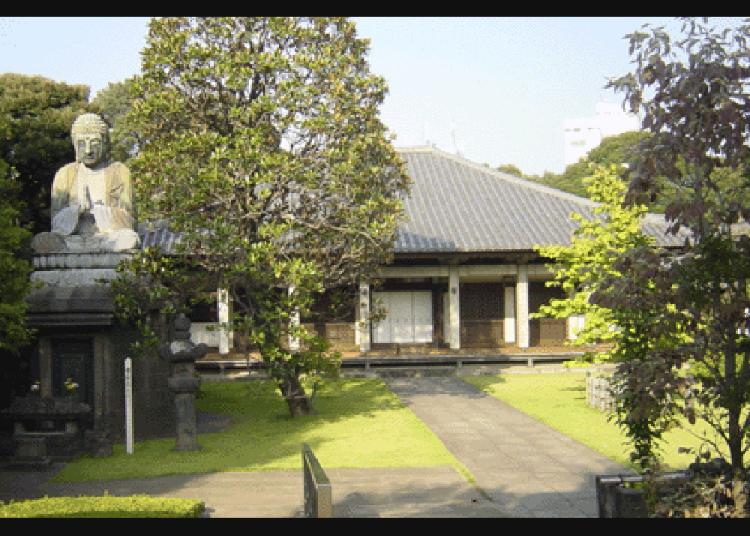
Situated in a corner of the vast Yanaka cemetery surrounded by nature, this is one of the best-known old temples in Tokyo. It is believed that the temple was established in the Kamakura period and is known for its style that is a combination of traditional temple architecture and modern architecture. A god of wealth and bravery is enshrined there.
The temple was originally a Nichiren-shu Buddhist temple, and its official name is Gokoku-zan Sonju-in Tennoji. It is said that the temple was established in the late Kamakura era, and the local lord, Nagateru Seki, created a small house in devotion for Buddhist monk Nichiren, who visited him.
Nichiren's student, Nichigen, later enshrined a sculpture of Nichiren that was carved by Nichiren himself, and the house was then named Choyo-zan Kan'noji. Tomi-kuji lotteries were widely played during the Edo period, and the Ten'noji Temple along with the Ryusenji Temple in Meguro and the Yushima Tenjin were popular as the Edo's three temples that issued lotteries.
The five-storied pagoda at the Ten'noji Temple became a model of a novel ”Goju-no-To,” or ”The Five-Storied Pagoda,” by a great author, Rohan Koda. This pagoda was built in 1644 but burnt down in 1771. Its remains are left at Yanaka Cemetery. It is a 2-minute walk from the South Exit of the Nippori Station on the JR Line.
-
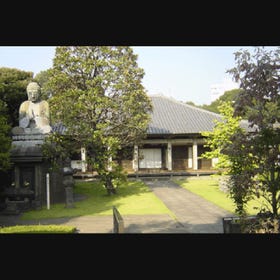
-
Address
7-14-8, Yanaka, Taitou-ku, Tokyo, 110-0001
View Map -
Nearest Station
Nippori Station (JR Keihin-Tohoku Line / JR Yamanote Line / JR Joban Line / JR Ueno Tokyo Line / Nippori-Toneri Liner / Keisei Main Line / Narita SKY ACCESS Line)
2 minutes on foot
- Phone Number 03-3821-4474
-
Address
7-14-8, Yanaka, Taitou-ku, Tokyo, 110-0001
No. 2: Kiyomizu Kannon-do Temple
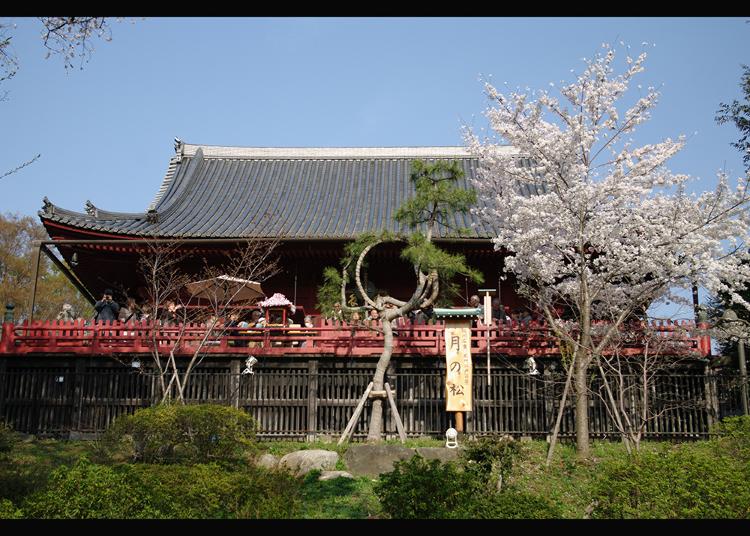
It was built in 1631 in the precincts of Toeizan Kan'ei-ji Temple. Kan'ei-ji Temple was established by Tenkai Daisojo (the highest rank of priesthood) to provide security to the Tokugawa shogunate and tranquility to its people, and also to protect Edo Castle's northeastern gate (which was believed to be unlucky). Many temple halls, modeled after the pattern of famous temples in Kyoto, were built.
Kiyomizu Kannon-do Temple is one of them, with the no-nail construction that imitates that of Kiyomizu Temple in Kyoto Higashiyama. Today, it is designated an Important Cultural Property of the country, with an impressively vivid cinnabar facade. The Senju Kannon statue, the main image of the temple, created by Eshin Sozu, was also inspired by Kiyomizu Temple and today is worshiped as ”hibutsu,” a hidden Buddha.
In addition, the ”Moon Pine,” one of the ukiyo-e masterpieces by Utagawa Hiroshige (a painter of the Edo era), depicted in the series called ”One Hundred Famous Views of Edo,” has been restored after about 150 years. The rare pine branch that makes a complete revolution is a must-see. It is an 8-minute walk from JR (Japan Railways) Ueno Station.
-
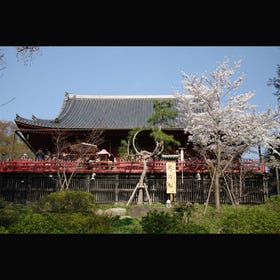
-
Address
1-29, Uenokouen, Taitou-ku, Tokyo, 110-0007
View Map -
Nearest Station
Ueno Station (Hokkaido Shinkansen Line / Tohoku Shinkansen Line / Akita Shinkansen Line / Yamagata Shinkansen Line / Joetsu Shinkansen Line / Hokuriku Shinkansen Line / JR Keihin-Tohoku Line / JR Yamanote Line / JR Tohoku Main Line / JR Utsunomiya Line / JR Takasaki Line / JR Joban Line / JR Ueno Tokyo Line / Tokyo Metro Ginza Line / Tokyo Metro Hibiya Line)
8 minutes on foot
- Phone Number 03-3821-4749
-
Address
1-29, Uenokouen, Taitou-ku, Tokyo, 110-0007
No. 3: Benten-do
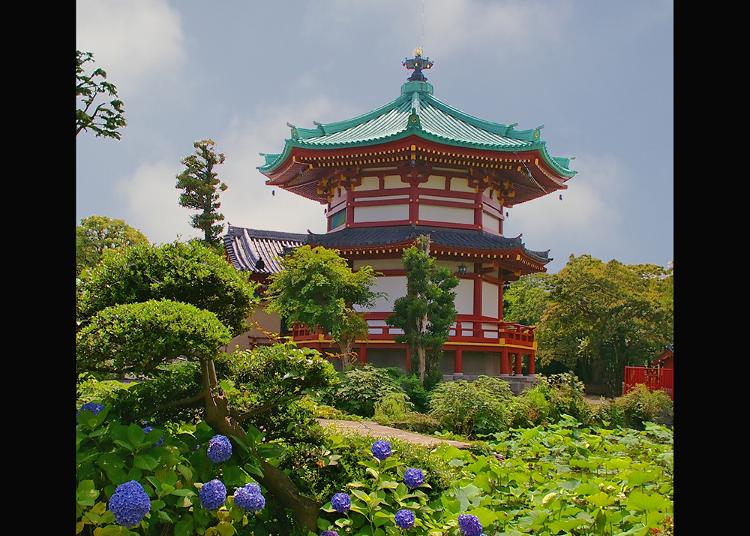
The Bentendo Temple in the Shinobazu Pond is one of the remaining buildings of the Toeizan Kan'eiji temple complex, 10 hectres in area, which has a number of National Important Cultural Properties.
The founder of Kan’eiji Temple, the high priest Tenkai (1536?-1643) built an artificial islet called Nakanoshima in the Shinobazu Pond after Chikubu Island of Lake Biwa and erected a Bentendo Temple there. The current building was reconstructed in 1958.
Its main object of worship, the Happi (eight-armed) Benzaiten originally comes from Hogonji Temple on Chikubu Island. Shinobazu Pond, a spacious natural pond in Ueno Park with Bentendo Hall surrounded by lotus plants is quite a magnificent vista.
During spring, the park, popular with residents and tourists alike, is filled with large number of people who enjoy viewing the cherry blossoms in full bloom. It is an eight-minute walk from the Park Exit of JR Ueno Station.
-
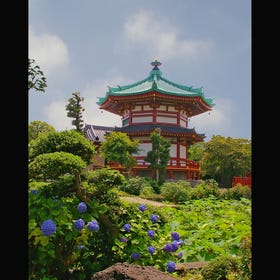
-
Address
2-1, Uenokouen, Taitou-ku, Tokyo, 110-0007
View Map -
Nearest Station
Ueno Station (Hokkaido Shinkansen Line / Tohoku Shinkansen Line / Akita Shinkansen Line / Yamagata Shinkansen Line / Joetsu Shinkansen Line / Hokuriku Shinkansen Line / JR Keihin-Tohoku Line / JR Yamanote Line / JR Tohoku Main Line / JR Utsunomiya Line / JR Takasaki Line / JR Joban Line / JR Ueno Tokyo Line / Tokyo Metro Ginza Line / Tokyo Metro Hibiya Line)
8 minutes on foot
- Phone Number 03-3821-4638
-
Address
2-1, Uenokouen, Taitou-ku, Tokyo, 110-0007
No. 4: Kanei-ji
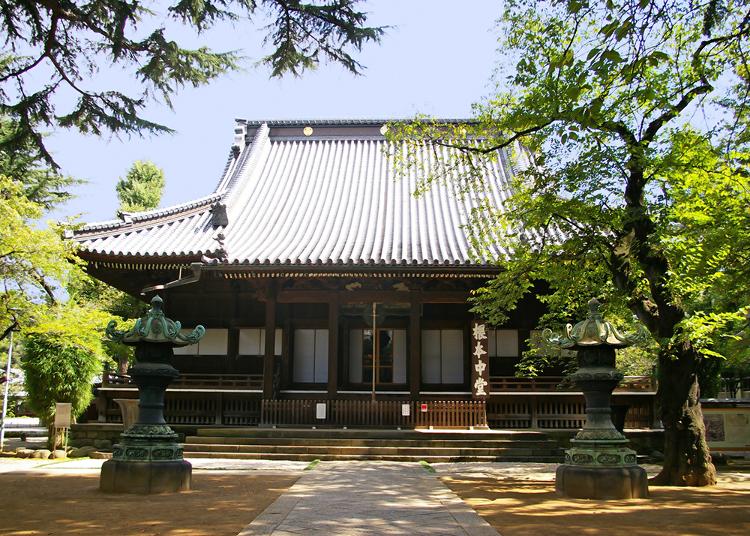
Founded in 1625 by Jigen Daishi Tenkai (1536–1643) to pray for peace for the people. Since the Edo period (1603–1868) the Buddhist temple is not only one of the largest of its kind in Japan but one held in the highest esteem.
After the Second World War the temple sought to play the role of a Buddhist temple open to public. The temple not only developed a cemetery, but held annual events such as opening the temple buildings, thereby gaining public affinity.
Even though it is only a tenth of its former size, the temple still has spacious precincts, about 10 hectares containing buildings such as Kaizando Hall, Bentendo Hall, Mausoleum of the Tokugawa Shoguns, Rin'oden Hall and Ueno Pagoda. Kiyomizu Kannon-do Hall, enshrining the Thousand-armed Kannon (sahasrabhuja arya avalokitezvara); the former Omote-mon Gate of Gohonbo Hall of Kan'eiji Temple, currently at Rin'o-ji Temple; and the Chokugaku-mon Gates (inscribed by the emperor) for the mausoleums of fourth and fifth shoguns Ietsuna and Tsunayoshi are all designated Important Cultural Properties.
This is a place to feel the presence of Japanese history. During spring the park area attracts large numbers of visitors for the cherry blossom viewing. An eight-minute walk from Ueno Park Exit of JR Ueno Station.
-
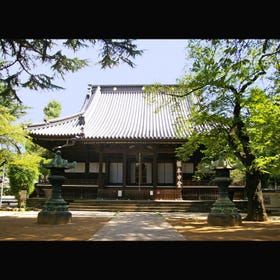
-
Address
1-14-11, Uenosakuragi, Taitou-ku, Tokyo, 110-0002
View Map -
Nearest Station
Ueno Station (Hokkaido Shinkansen Line / Tohoku Shinkansen Line / Akita Shinkansen Line / Yamagata Shinkansen Line / Joetsu Shinkansen Line / Hokuriku Shinkansen Line / JR Keihin-Tohoku Line / JR Yamanote Line / JR Tohoku Main Line / JR Utsunomiya Line / JR Takasaki Line / JR Joban Line / JR Ueno Tokyo Line / Tokyo Metro Ginza Line / Tokyo Metro Hibiya Line)
8 minutes on foot
- Phone Number 03-3821-4440
-
Address
1-14-11, Uenosakuragi, Taitou-ku, Tokyo, 110-0002
No. 5: Five-story Pagoda of Former Kan'ei-ji Temple
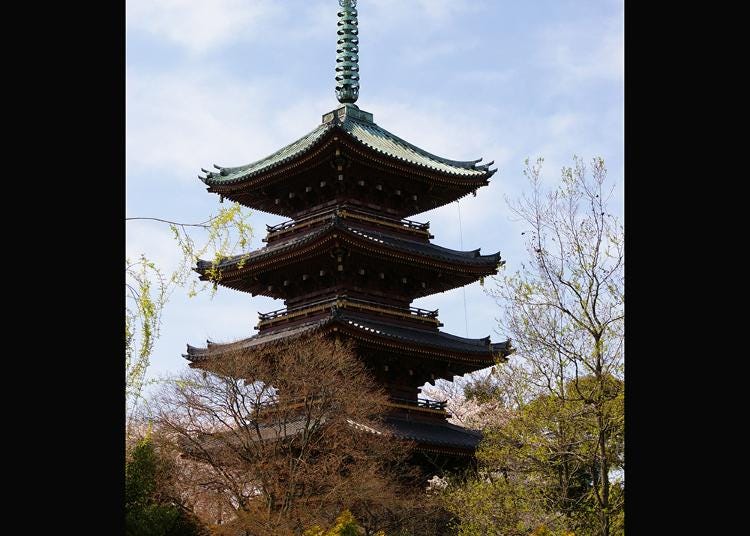
The park, currently about 10 hecters (a tenth of what it used to be) in Ueno, was formerly the temple grounds of Toeizan Kan'eiji Temple. The Buddhist temple, founded to pray for security both for the Tokugawa Shogunate and its people all over Japan, had a lot of buildings in its prime and the five-story pagoda is one of the remaining buildings.
First built in 1631 and rebuilt in 1639, the pagoda is 36 meters high from the ground to the hoju (uppermost spherical part) and has a five-tiered structure. The roof of the fifth and uppermost floor is covered in copper sheets while the rest of the roofs are in Japanese traditional ceramic tiles.
In each corner of the first floor, Buddha, Bhaisajyaguru, Amitabha, and Maitreya statues are enshrined. The sight of the wooden pagoda towering over the woods thriving in Ueno, the emblematic beauty of Japanese traditional architecture and the weight of the long-standing history of Japan can be felt. It is an eight-minute walk from JR Ueno Station.
-
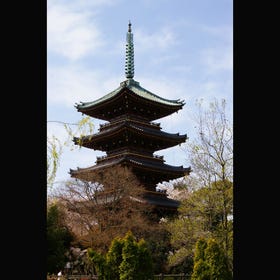
-
Address
Inside Ueno Zoo, 9-83 Ueno Park, Taito-ku, Tokyo, 110-0007
View Map -
Nearest Station
Keisei Ueno Station (Keisei Main Line / Narita SKY ACCESS Line)
8 minutes on foot
- Phone Number 03-3828-5171
-
Address
Inside Ueno Zoo, 9-83 Ueno Park, Taito-ku, Tokyo, 110-0007
*Prices and options mentioned are subject to change.
*Unless stated otherwise, all prices include tax.
Limited time offer: 10% discount coupons available now!
Recommended places for you
-

Tokyo Metropolitan Government
Landmarks
Shinjuku
-

The Tokyo Station Marunouchi Building
Landmarks
Tokyo Station
-
Events
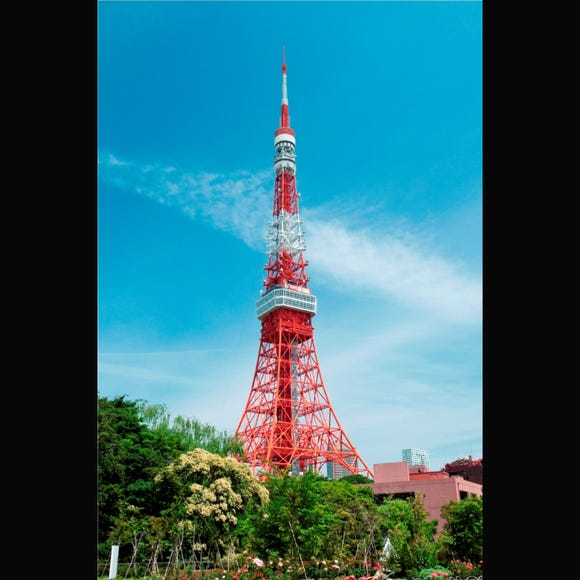
Tokyo Tower
Landmarks
Roppongi
-
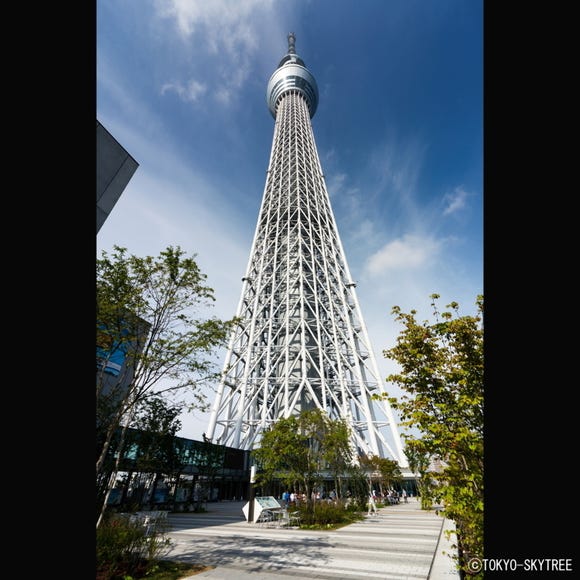
TOKYO SKYTREE®
Landmarks
Ryogoku / TOKYO SKYTREE(R)
-

Kappabashi Street
Old Towns (Shitamachi)
Asakusa
-
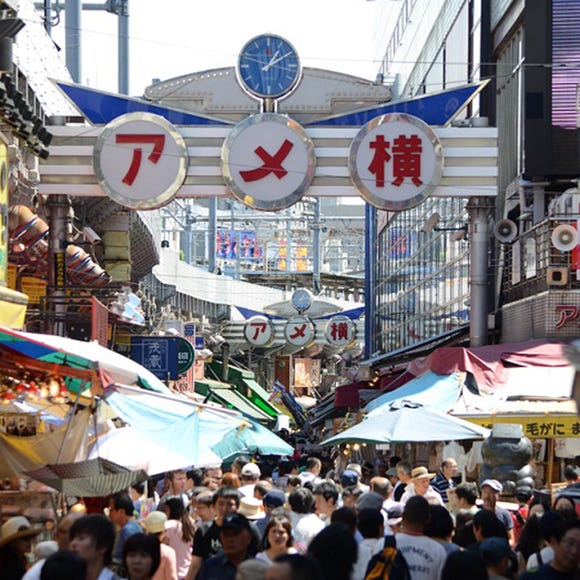
Ameyoko Shopping Street
Old Towns (Shitamachi)
Ueno
-

Where to Eat in Yokohama: 10 Must-Try Restaurants for Yakiniku, Izakayas, Unique Dining & More
-

Discover Osaka Station City: A Journey Through Its Most Fascinating Spots
-

Where to Eat in Shibuya: 14 Must-Try Restaurants for Yakiniku, Sushi, Izakayas, Cafes and More
-

Best Things to Do in Tokyo in April 2024: Events, Festivals & More
-

12 Unique & Fun Tokyo Food Tours to Enjoy in 2024
-

The CASIO S100: How CASIO's Masterpiece Calculator Redefines Business Elegance With Japan-Made Reliability
-
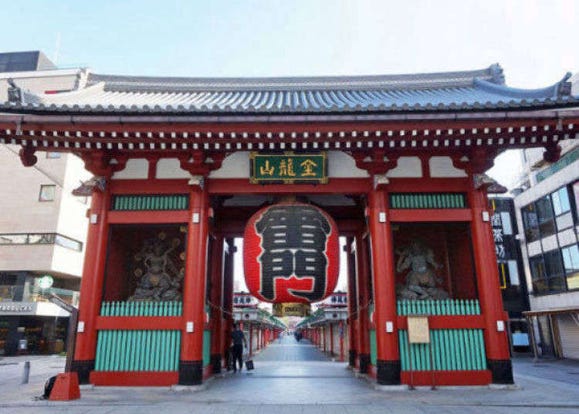
Model Itinerary: Tour Tokyo's Historic Asakusa Neighborhood in a Day
-
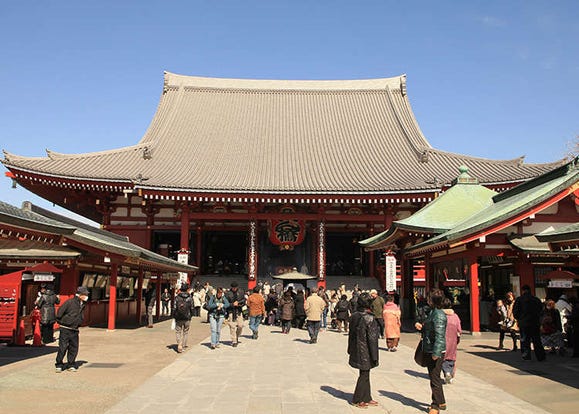
How to Enjoy Asakusa's Sensoji Temple Area
-
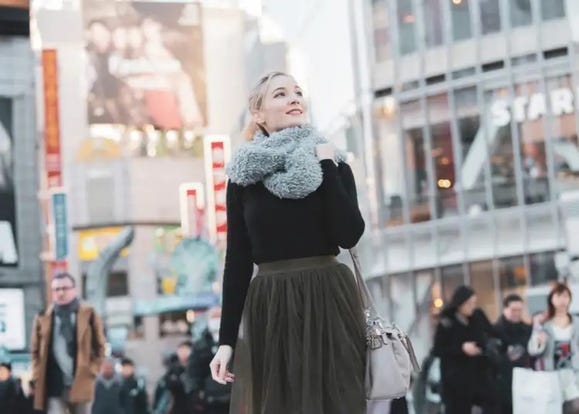
Secrets to Shopping in Japan: Guide to Annual Sales in Japan & Where to Shop
-
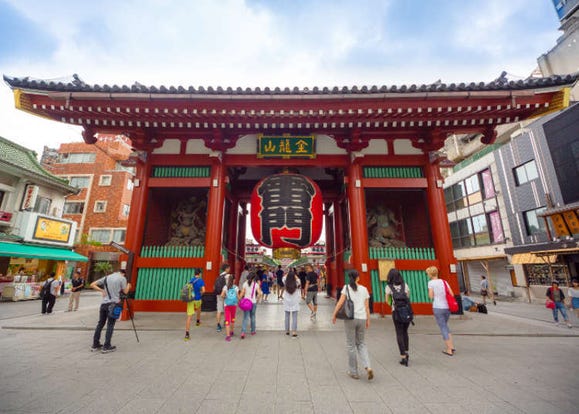
Tokyo Asakusa|Asakusa Station Area Map & Sightseeing Information
-
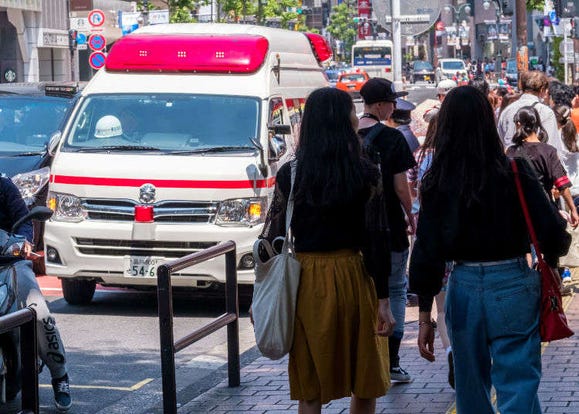
Healthcare in Japan for Tourists: What to Do When You Get Sick or Injured in Japan
-
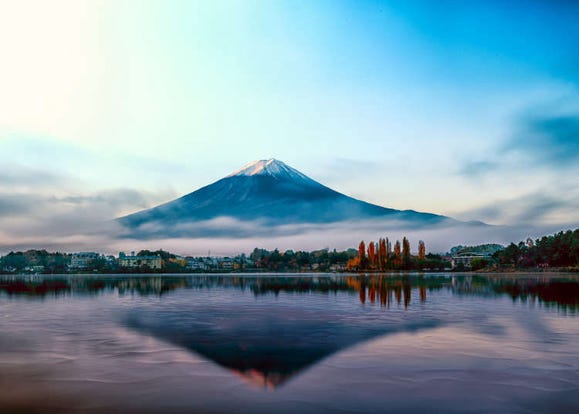
16 Secrets About Mt. Fuji, the Symbol of Japan: Even Japanese People Don’t Know That?!
- #best ramen tokyo
- #what to buy in ameyoko
- #what to bring to japan
- #new years in tokyo
- #best izakaya shinjuku
- #things to do tokyo
- #japanese nail trends
- #what to do in odaiba
- #onsen tattoo friendly tokyo
- #daiso
- #best sushi ginza
- #japanese convenience store snacks
- #best yakiniku shibuya
- #japanese fashion culture
- #best japanese soft drinks













